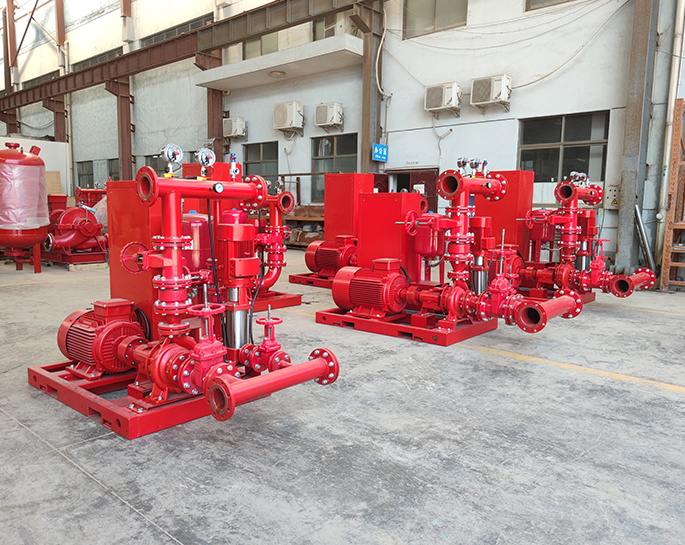The role and challenges of fire pumps in urban planning
Fire pumps play a crucial role in urban planning to ensure the safety and protection of buildings, infrastructure, and the public in case of fires. These pumps are an integral part of a city's fire protection system and are responsible for supplying water to fire sprinkler systems, standpipes, and hoses in high-rise buildings and other structures. Here are the key roles and challenges associated with fire pumps in urban planning:
Roles of Fire Pumps in Urban Planning:
-
Fire Suppression: Fire pumps are designed to deliver pressurized water to firefighting equipment and systems, such as sprinklers, hydrants, and hoses. They ensure an adequate and continuous supply of water for firefighting operations, allowing firefighters to control and extinguish fires effectively.
-
High-Rise Building Safety: In urban areas with skyscrapers and high-rise buildings, fire pumps are essential to overcome the limitations of static water pressure. They boost water pressure to reach the upper floors, as municipal water supply systems might not provide sufficient pressure to combat fires at elevated heights.
-
Backup for Municipal Water Supply: Fire pumps act as a backup to the city's municipal water supply in case of water main breaks, supply disruptions, or inadequate pressure during a fire emergency. They ensure that a reliable water source is available for firefighting.
-
Compliance with Building Codes: Urban planning and building codes often require the installation of fire pumps in specific types of buildings, especially those with multiple stories, large occupancy, or high fire risks. Compliance with these codes is essential to ensure the safety of occupants and nearby properties.
Challenges in Urban Planning Related to Fire Pumps:
-
Design and Installation: Properly designing and installing fire pump systems is a complex process. It involves considerations related to the building's size, layout, occupancy, water source, and the fire pump's capacity, location, and maintenance access. Ensuring that these systems meet regulatory standards is a significant challenge.
-
Maintenance and Reliability: Fire pumps must be regularly inspected, tested, and maintained to ensure they function correctly during a fire emergency. Maintaining these systems is often challenging due to accessibility issues and the need for skilled technicians.
-
Power Supply: Fire pumps require a reliable power source to operate. Ensuring an uninterrupted power supply, even during electrical outages, is essential to their effectiveness. Backup power systems, such as generators, are often needed to address this challenge.
-
Water Source and Supply: Ensuring a sufficient and dependable water source for fire pumps can be challenging, particularly in densely populated urban areas. Access to a high-capacity water source, such as a municipal water system or dedicated fire storage tanks, is necessary.
-
Coordination with Municipal Authorities: Effective urban planning requires close coordination with municipal fire departments and authorities responsible for enforcing fire codes and standards. Collaboration is essential to ensure that fire pump systems meet all regulatory requirements.
-
Cost Considerations: The installation and maintenance of fire pump systems can be costly. Urban planners must consider budget constraints and funding sources when incorporating fire protection measures into building projects.
In summary, fire pumps are vital components of urban planning for fire safety, especially in areas with high-rise buildings and complex infrastructure. While their installation and maintenance come with challenges, their proper implementation is essential to protect lives and property in densely populated urban environments.







